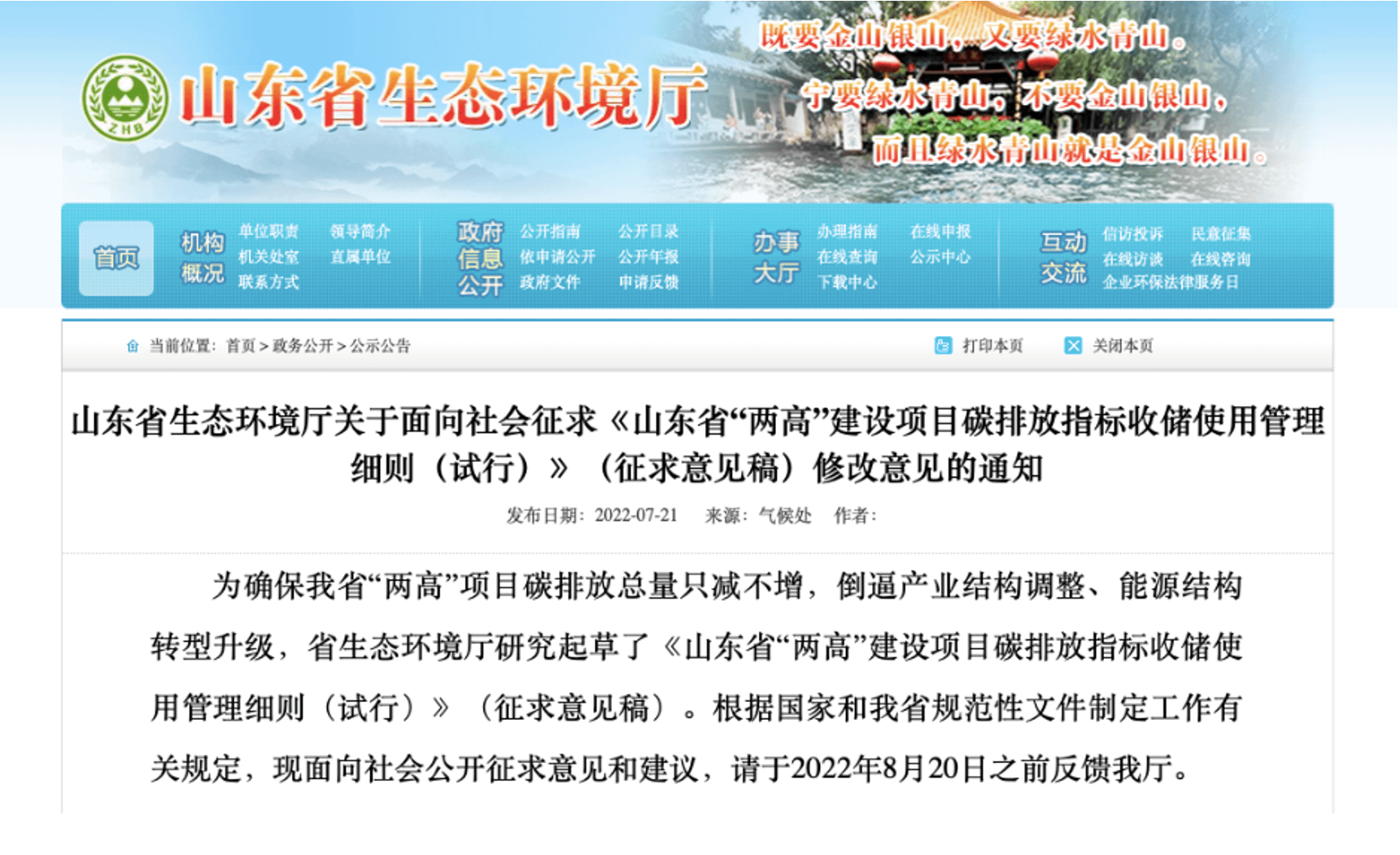The double-counting of Chinese EACs including green electricity, GEC, CCER, VCS, etc., have long been the subject of controversies and concerns. Such concerns are believed to have been partly accountable for the suspension of the CCER issuance since 2017. While the rumors concerning the reactivation of CCER issuance is spreading, a draft for consultation of the Management Rules for the Collection, Reserve, and Utilization of Shandong “Two-High” Construction Project’s Carbon Emissions Quota (《山东省“两高”建设项目碳排放指标收储使用管理细则(试行)》) was released by the Shandong Department of Ecology and Environment (DEE) in late July.
The document explains in detail how the construction of a new project belonging to high-power consumption and emissions industries can use various measures, including green power, to compensate for its extra emissions. In the paragraph specifying the criteria for using the carbon emission reduction plan to substitute a new project’s emissions, the Shandong DEE stipulates that:
“The applicant shall, when renewable energy is used to reduce the new project’s emissions, have the exclusive claim on the environmental attribute of the renewable power. That being said, the renewable energy shall not be used to develop CCER, CDM, VCS, and other carbon reduction instruments or other mechanisms. Neither shall it obtain GEC or be sold as green electricity in order to avoid double counting or multi-counting of the energy’s environmental attributes.”
This signifies that renewable power which is sold through green electricity trading or whose corresponding GEC is sold separately cannot be used with any other emissions reduction instruments. In this case, green power users or green instrument holders will not need to worry about the risks of not having the exclusive claim for these attributes. On the other hand, green power project developers will need to be prudent concerning the financial income estimation related to the environmental attribute certificates (EAC). It is remarkable that such a no-double counting clarification of environmental attributes is specified in the rules and regulations of a provincial DEE. Once this is implemented across China, the new Chinese EAC will be extensively recognized internationally.



